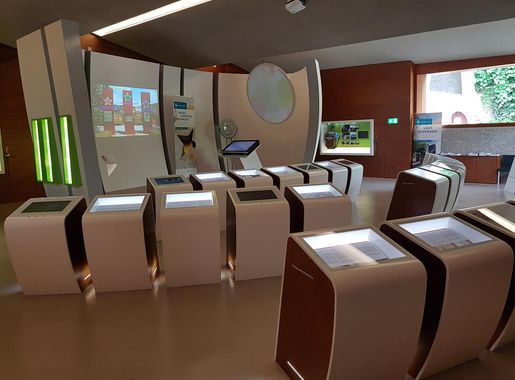
Upper Moselle Nature Park: Luxembourg's Serene Sanctuary
Discover the serene landscapes, rich history, and vibrant culture of Luxembourg's Upper Moselle Nature Park, a haven for nature enthusiasts and adventure seekers.
The Upper Moselle Nature Park in Luxembourg is a hidden gem that offers a tranquil escape for nature lovers and outdoor enthusiasts. Nestled in the southeastern part of Luxembourg, this park is renowned for its lush landscapes, meandering rivers, and picturesque vineyards. The park spans over 10,000 hectares, making it an ideal destination for hiking, cycling, and bird-watching. Visitors can explore a variety of trails that wind through verdant forests, rolling hills, and charming villages. Each path offers unique vistas and the opportunity to encounter local wildlife. The Moselle River, which flows through the park, is perfect for kayaking and fishing. Don't miss the chance to sample local wines at the vineyards that dot the landscape, offering a taste of Luxembourg's rich viticultural heritage. Apart from its natural beauty, the Upper Moselle Nature Park is steeped in history. Ancient Roman ruins and medieval castles provide a glimpse into the region's storied past. The park also hosts several cultural events throughout the year, celebrating local traditions and crafts. Whether you're seeking adventure or relaxation, the Upper Moselle Nature Park promises a memorable experience in the heart of nature.
Local tips in Upper Moselle Nature Park
- Bring comfortable hiking shoes to fully enjoy the park's extensive trail network.
- Visit during autumn to see the vineyards at their most picturesque.
- Check the local event calendar for cultural festivals and wine tastings.
- Pack a picnic and enjoy a meal by the Moselle River.
- Rent a kayak for a unique perspective of the park from the water.
- Don't forget your binoculars for bird-watching opportunities.
Upper Moselle Nature Park: Luxembourg's Serene Sanctuary
The Upper Moselle Nature Park in Luxembourg is a hidden gem that offers a tranquil escape for nature lovers and outdoor enthusiasts. Nestled in the southeastern part of Luxembourg, this park is renowned for its lush landscapes, meandering rivers, and picturesque vineyards. The park spans over 10,000 hectares, making it an ideal destination for hiking, cycling, and bird-watching. Visitors can explore a variety of trails that wind through verdant forests, rolling hills, and charming villages. Each path offers unique vistas and the opportunity to encounter local wildlife. The Moselle River, which flows through the park, is perfect for kayaking and fishing. Don't miss the chance to sample local wines at the vineyards that dot the landscape, offering a taste of Luxembourg's rich viticultural heritage. Apart from its natural beauty, the Upper Moselle Nature Park is steeped in history. Ancient Roman ruins and medieval castles provide a glimpse into the region's storied past. The park also hosts several cultural events throughout the year, celebrating local traditions and crafts. Whether you're seeking adventure or relaxation, the Upper Moselle Nature Park promises a memorable experience in the heart of nature.
When is the best time to go to Upper Moselle Nature Park?
Iconic landmarks you can’t miss
Vianden Castle
Experience the enchanting beauty of Vianden Castle, a medieval fortress that transports you back in time amidst stunning landscapes and rich history.

Bock Casemates
Discover the Bock Casemates, a UNESCO World Heritage site in Luxembourg City, featuring historic tunnels and breathtaking views of the city.

Pont Adolphe
Discover the breathtaking beauty of Pont Adolphe, Luxembourg's iconic bridge, offering stunning views and a glimpse into the city's rich history.

Municipal park of Luxembourg
Explore the serene Municipal Park of Luxembourg, a beautiful green oasis filled with vibrant flowers, historic monuments, and peaceful pathways, perfect for relaxation.

Cathédrale Notre-Dame
Explore the architectural beauty and historical significance of Cathédrale Notre-Dame, a stunning Gothic landmark in the heart of Luxembourg City.

Palais Grand-Ducal
Explore the grandeur of the Palais Grand-Ducal, a historical landmark and symbol of Luxembourg's royal heritage in Ville Haute.

Medieval Castle Beaufort
Explore the majestic Medieval Castle Beaufort, a historical landmark in Luxembourg that brings medieval tales and breathtaking views to life.

Parc de Merl
Experience the serene beauty of Parc de Merl, a lush urban park in Luxembourg offering picturesque landscapes and recreational activities for all.

Monument of Remembrance
Discover the Monument of Remembrance in Luxembourg City, a striking tribute to freedom and resilience, surrounded by stunning views and rich history.

Bourscheid Castle
Explore the rich history and stunning views at Bourscheid Castle, a must-visit landmark in Luxembourg's picturesque landscape.

Escher Tier Park
Discover Escher Tier Park, a serene animal park in Esch-sur-Alzette, where wildlife and nature come together for an unforgettable family adventure.

Esch-sur-Sûre Castle
Explore the enchanting Esch-sur-Sûre Castle, a historical landmark offering breathtaking views and a glimpse into Luxembourg's rich medieval heritage.

National Museum of Military History (MNHM) Asbl
Discover the rich military heritage of Luxembourg at the National Museum of Military History, where history and valor come together in an engaging experience.

Fort Thüngen
Explore Fort Thüngen, a stunning historical fortress in Luxembourg, surrounded by lush parks and rich heritage, perfect for history buffs and nature lovers alike.

Larochette Castle
Discover the enchanting Larochette Castle in Luxembourg, a historical landmark offering breathtaking views and rich medieval history amidst stunning landscapes.

Unmissable attractions to see
Parc Merveilleux
Experience the magic of Parc Merveilleux, a unique blend of amusement park, zoo, and lush gardens in Bettembourg, Luxembourg.

Designer Outlet Luxembourg
Discover unbeatable savings on top brands at Designer Outlet Luxembourg, the ultimate shopping destination in Messancy, Belgium.
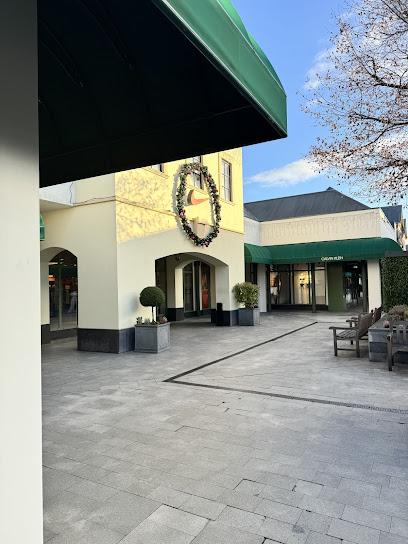
Parc de Merl
Explore the serene beauty of Parc de Merl, a lush park in Luxembourg perfect for relaxation, picnics, and family outings amidst nature.

Bastogne Barracks
Explore the profound history of World War II at Bastogne Barracks, a captivating museum that honors the legacy of the Battle of the Bulge.

Roman Villa Borg
Explore the Roman Villa Borg in Perl, Germany – a stunning reconstruction of an ancient villa, rich in history and breathtaking architecture.

Kallektuffquell
Discover Kallektuffquell, a stunning travertine spring in Luxembourg, where nature's beauty and tranquility await every visitor.

Castle Playground
Discover the enchanting Castle Playground in Luxembourg, a perfect spot for family fun and adventure in a picturesque setting with castle-themed attractions.

Paix Woods
Experience the serene beauty of Paix Woods in Bastogne, a tranquil park perfect for nature lovers and history enthusiasts alike.

Caves Bernard-Massard
Experience the exquisite wines of Luxembourg at Caves Bernard-Massard, a charming winery in the scenic Moselle Valley, perfect for wine lovers and travelers alike.

Rives de Clausen
Explore Rives de Clausen, a vibrant mix of bars, restaurants, and nightlife in the heart of Luxembourg, offering a unique blend of culture and entertainment.

Parc Molter
Experience the natural beauty and tranquility of Parc Molter in Mondercange, a perfect park for relaxation, recreation, and family fun.
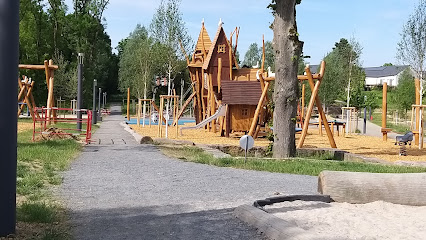
Hammelsberg
Discover the serene beauty of Hammelsberg Nature Preserve in Perl, Germany, where stunning landscapes and diverse wildlife await your exploration.

Naturpark Öewersauer
Explore the breathtaking landscapes and rich wildlife of Naturpark Öewersauer, a national park in Luxembourg perfect for outdoor adventures and serene escapes.
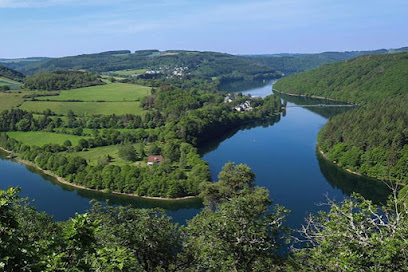
Pont Misère
Discover the breathtaking beauty of Pont Misère, a scenic bridge in Boulaide, perfect for photography and nature walks amidst stunning landscapes.
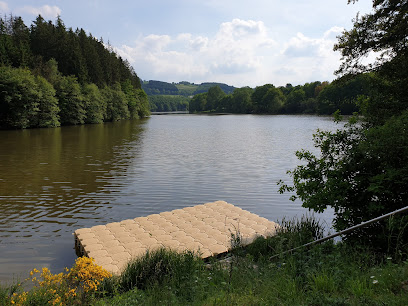
Edith Klein Park
Discover the tranquil beauty of Edith Klein Park in Ville Haute, Luxembourg, a perfect escape into nature for tourists and locals alike.

Essential places to dine
Café-Restaurant Um Dierfgen
Experience the essence of Luxembourg's culinary heritage at Café-Restaurant Um Dierfgen in Ville-Haute.

Le Bistrot Gourmand
Experience exquisite European cuisine at Le Bistrot Gourmand in Remerschen – a culinary gem offering fresh local flavors in a charming setting.

Madeira Stuff
Experience authentic Portuguese cuisine at Madeira Stuff in Pafendall, Luxembourg - where flavor meets tradition in every bite.

Elch Club-Restaurant
Experience exquisite French cuisine and vibrant bar culture at Elch Club-Restaurant in Bertrange - where every meal is a celebration.

Parc Le'h
Experience exquisite French cuisine at Parc Le'h - where culinary art meets fresh ingredients in an elegant setting.

Siegfried
Discover Siegfried: Where Gourmet Hamburgers Meet Craft Beer in the Heart of Luxembourg's Limpertsberg District.

Ma langue sourit
Discover unparalleled fine dining at Ma langue sourit in Oetrange – where exquisite cuisine meets elegant ambiance.

Restaurant Le Sud - Restaurant gastronomique - Rives de clausen
Experience the finest modern French cuisine at Restaurant Le Sud in Luxembourg's scenic Rives de Clausen - a true gastronomic delight.

Restaurant Cyrano
Experience the best of Mediterranean cuisine at Restaurant Cyrano - where French elegance meets Italian flair in the heart of Luxembourg.

Culturando
Discover authentic Italian cuisine at Culturando in Luxembourg’s charming Pafendall district - where every dish tells a story.

Juegdschlass (Restaurant-cafe)
Experience the rich flavors of Luxembourg at Juegdschlass - a top-rated restaurant-cafe perfect for every food lover.

La Tapería
Experience the essence of Spain at La Tapería in Limpertsberg—where every tapa tells a story.

La Distillerie
Discover La Distillerie in Bourglinster for an exquisite fine dining experience that blends local flavors with culinary artistry.

Café littéraire Le Bovary
Discover Café littéraire Le Bovary: where literature meets culinary delight in the heart of Luxembourg's Weimerskirch.

Brasserie Bar Le Seppl
Discover authentic Luxembourgish cuisine and a lively atmosphere at Brasserie Bar Le Seppl in Limpertsberg.

Markets, malls and hidden boutiques
Belle Etoile Shopping Center
Discover a shopping haven at Belle Etoile Shopping Center in Bertrange, where retail, dining, and entertainment come together in one vibrant location.

Knauf Shopping Center Pommerloch
Experience the best of shopping at Knauf Shopping Center Pommerloch, where a diverse selection of local and international brands awaits you.

Belval Plaza Shopping Center
Discover the ultimate shopping experience at Belval Plaza Shopping Center in Esch-sur-Alzette, where retail therapy meets culinary delights.

Designer Outlet Luxembourg
Explore Designer Outlet Luxembourg: A shopping haven with amazing discounts on designer brands, suitable for all tastes and ages.

Cloche d'Or Shopping Center
Experience luxury shopping and gourmet dining at Cloche d'Or Shopping Center in the heart of Luxembourg, where style and entertainment meet.

City Concorde
Discover City Concorde: A vibrant shopping mall in Helfent Bertrange, Luxembourg, offering diverse stores and delightful dining experiences.

Kirchberg Shopping Center
Experience the vibrant Kirchberg Shopping Center in Luxembourg, where shopping meets dining and entertainment in a modern setting.

Parc de Merl
Explore the enchanting Parc de Merl in Luxembourg, a serene park perfect for relaxation, picnics, and nature walks amidst stunning landscapes.

Escher Tier Park
Discover Escher Tier Park in Esch-sur-Alzette, a delightful animal park perfect for families and nature lovers, offering a unique wildlife experience.

Topaze Shopping Center
Experience the ultimate shopping and dining destination at Topaze Shopping Center in Mersch, where style meets convenience.

copal Mertert-Wasserbillig
Explore Copal Mertert-Wasserbillig, a vibrant shopping hub in Luxembourg offering diverse shops and local flavors in a charming atmosphere.

Kallektuffquell
Explore the enchanting Kallektuffquell, a stunning travertine source surrounded by lush landscapes in Luxembourg's Mullerthal region.

Gorges du Loup
Discover the breathtaking beauty of Gorges du Loup, a natural wonder in Luxembourg that offers stunning views and unforgettable adventures.

Nature and Discoveries
Discover unique, nature-inspired gifts at Nature and Discoveries in Bertrange, where sustainability meets creativity.
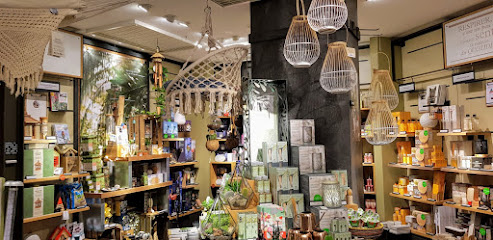
Place des Martyrs
Explore the serene beauty and rich history of Place des Martyrs, a peaceful park in Luxembourg perfect for relaxation and reflection.

Essential bars & hidden hideouts
Scott's Pub
Discover the charm of Scott's Pub, a delightful gastropub in Luxembourg's Grund district, offering local flavors and a cozy atmosphere.

The Game Sportsbar & Steakhouse
Experience the thrill of sports and savor delicious steakhouse cuisine at The Game Sportsbar & Steakhouse in Kirchberg, Luxembourg.

Tube
Experience the lively nightlife and warm ambiance at Tube Bar in the heart of Luxembourg's Ville Haute, perfect for locals and tourists alike.

Oscar's Bar
Experience the vibrant atmosphere and mouthwatering burgers at Oscar's Bar in Luxembourg's charming Grund district.

Updown Bar
Experience the vibrant atmosphere of Updown Bar, a cozy Irish pub in the heart of Luxembourg, perfect for drinks, dining, and delightful evenings.

Go Ten Bar & Café
Experience the vibrant fusion of Japanese cuisine and cocktail culture at Go Ten Bar & Café in the heart of Luxembourg's Ville Haute.

Ënnert de Steiler
Discover the vibrant atmosphere of Ënnert de Steiler, a quintessential bar and café in the heart of Luxembourg, perfect for drinks, dining, and socializing.

De Gudde Wëllen
Discover De Gudde Wëllen, a vibrant bar in Luxembourg City offering a lively atmosphere and an extensive drink menu perfect for unwinding after a day of exploration.

Café The Black Stuff Sàrl
Experience the warmth and flavor of Ireland at Café The Black Stuff, a charming Irish pub in Polfermillen, Luxembourg.

Restaurant Bar Zulu Blanc
Discover the energetic atmosphere of Restaurant Bar Zulu Blanc, a premier bar and nightclub in Luxembourg's Grund district, perfect for an unforgettable night out.

Wëllem
Discover Wëllem, a luxurious lounge and cocktail bar in Ville Haute, Luxembourg, offering an exquisite selection of drinks and a vibrant atmosphere.

The Britannia Pub
Experience the vibrant atmosphere of The Britannia Pub in Luxembourg's Clausen district, where great beer, hearty meals, and live sports await.

The White Rose Pub
Experience the vibrant nightlife of Luxembourg at The White Rose Pub, a perfect blend of great drinks, darts, and a welcoming atmosphere.

De gudde Wellen
Experience the vibrant atmosphere of De gudde Wellen, a charming bar in the heart of Luxembourg's Ville Haute, perfect for unwinding with friends.

Lady Jane
Discover Lady Jane: Luxembourg's premier cocktail bar blending eclectic ambiance with innovative drinks for an unforgettable nightlife experience.

Local Phrases about Upper Moselle Nature Park
-
- HelloMoien
[Moy-en] - GoodbyeÄddi
[Add-ee] - YesJo
[Yo] - NoNee
[Nay] - Please/You're welcomeW.e.g.
[Vay-guh] - Thank youMerci
[Mehr-see] - Excuse me/SorryEntschëllegt
[Ent-shell-egt] - How are you?Wéi geet et dir?
[Vay gate et deer?] - Fine. And you?Gutt. Ech an du?
[Goot. Ek on doo?] - Do you speak English?Schwaarzt dir Englesch?
[Shvarts deer Eng-lesh?] - I don't understandEch verstinn net
[Ek verst-in net]
- HelloMoien
-
- I'd like to see the menu, pleaseEch géif gär d'Menü gesinn, w.e.g.
[Ek gayf gair deh-Men-oo geh-seen, vay-guh] - I don't eat meatEch iessen keng Fleesch
[Ek ee-sen keng Flaysh] - Cheers!Prost!
[Prohst] - I would like to pay, pleaseEch géif gär bezuelen, w.e.g.
[Ek gayf gair bez-oo-len, vay-guh]
- I'd like to see the menu, pleaseEch géif gär d'Menü gesinn, w.e.g.
-
- Help!Hëllef!
[Hell-eff] - Go away!Gitt ewech!
[Gitt eh-vek] - Call the Police!Rufft déi Police!
[Roof deh-Po-leece] - Call a doctor!Rufft en Dokter!
[Roof en Dock-ter] - I'm lostEch hunn mech verluer
[Ek hoon mehk fer-loo-er] - I'm illEch sinn krank
[Ek seen krahnk]
- Help!Hëllef!
-
- I'd like to buy...Ech géif kafen...
[Ek gayf kah-fen] - I'm just lookingEch kuck just
[Ek kook yoost] - How much is it?Wéivill kascht dat?
[Vay-vil kasht dat] - That's too expensiveDat ass ze deier
[Dat ass tseh deer] - Can you lower the price?Kënnt dir de Präis erof setzen?
[Kuhnt deer deh Prize eh-rof zet-sen]
- I'd like to buy...Ech géif kafen...
-
- What time is it?Wéi vill Auer ass et?
[Vay vil ow-air ass et] - It's one o'clockEt ass eis Auer
[Et ass ice ow-air] - Half past (10)Hallef (10)
[Hal-ef (10)] - MorningMuer
[Moo-air] - AfternoonNomëtteg
[No-met-eg] - EveningOwend
[Ov-end] - YesterdayGëschter
[Gesh-ter] - TodayHaut
[Howt] - TomorrowMuer
[Moo-air] - 1Eent
[Ent] - 2Zwee
[Zway] - 3Dräi
[Dry] - 4Veer
[Fear] - 5Fënnef
[Fen-ef] - 6Sechs
[Zex] - 7Siwwen
[Zee-ven] - 8Aacht
[Aahkt] - 9Néng
[Nang] - 10Zéng
[Zang]
- What time is it?Wéi vill Auer ass et?
-
- Where's a/the...?Wou ass e(n)...?
[Voo ass e(n)] - What's the address?Wat ass d'Adress?
[Vat ass dad-ress] - Can you show me (on the map)?Kënnt dir mir dat weisen (op der Kaart)?
[Kuhnt deer meer dat wise-en (op der Kart)] - When's the next (bus)?Wéini ass de nächste(n) (Bus)?
[Vay-nee ass de neh-kst (Boos)] - A ticket (to ....)Eng Karte (no ....)
[Eng Kart (no)]
- Where's a/the...?Wou ass e(n)...?
History of Upper Moselle Nature Park
-
The Upper Moselle region has a rich history dating back to the Roman era, when the area was an important part of the Roman Empire. The Romans recognized the fertile lands and strategic importance of the Moselle River, establishing settlements and vineyards. Ruins of Roman villas and artifacts still dot the landscape, offering a glimpse into the past.
-
During the medieval period, the Upper Moselle region was heavily fortified due to its strategic location. Numerous castles and fortresses were built to protect against invasions. The remnants of these medieval structures, such as the Castle of Stadtbredimus, tell stories of knights, battles, and feudal lords who once ruled the land.
-
The Upper Moselle Nature Park is renowned for its wine culture, which has roots that stretch back to Roman times. The 'Route du Vin' or Wine Route is a celebrated trail that takes visitors through picturesque vineyards and charming wine villages. The tradition of winemaking has been passed down through generations, and the region is famous for its exceptional Riesling and Pinot varieties.
-
The Upper Moselle region played a significant role during World War II. It was a site of strategic importance and saw numerous battles. The Luxembourg Resistance operated in this area, working to thwart German occupation. Memorials and museums in the region commemorate the bravery and sacrifices of those who fought during this tumultuous period.
-
In the late 20th century, efforts were made to preserve the natural beauty and cultural heritage of the Upper Moselle region. This led to the establishment of the Upper Moselle Nature Park in 1995. The park aims to protect the diverse ecosystems, support sustainable agriculture, and promote eco-tourism. It has since become a haven for nature enthusiasts and history buffs alike.
Upper Moselle Nature Park Essentials
-
Upper Moselle Nature Park is located in the southern part of Luxembourg. The nearest international airport is Luxembourg Airport (LUX), approximately 30 kilometers away. From the airport, you can rent a car, take a taxi, or use public transportation to reach the park. There are regular bus services from Luxembourg City to the towns surrounding the park, such as Remich and Schengen.
-
Once in the Upper Moselle Nature Park, you can explore the area by car, bicycle, or on foot. The park is well-connected by a network of roads and cycling paths. Public buses are available and connect the small towns and villages within the park. For a scenic experience, consider taking a boat tour on the Moselle River, which offers stunning views of the surrounding vineyards and landscapes.
-
The official currency in Luxembourg is the Euro (EUR). Credit cards are widely accepted in hotels, restaurants, and shops, but it is advisable to carry some cash for smaller establishments and rural areas. ATMs are available in the towns within the park, so you can easily withdraw cash if needed.
-
The Upper Moselle Nature Park is generally a safe area for tourists. Crime rates are low, but it is always wise to take standard precautions. Avoid leaving your belongings unattended and be cautious in crowded areas. There are no specific high-crime areas targeting tourists within the park.
-
In case of emergency, dial 112 for immediate assistance. This number will connect you to emergency services, including police, fire, and medical help. There are medical facilities and pharmacies in the larger towns such as Remich and Schengen. Make sure to have travel insurance that covers medical emergencies.
-
Fashion: Do dress comfortably and practically for outdoor activities, but be prepared for varying weather conditions. Don't wear overly casual or revealing clothing when visiting more formal establishments. Religion: Do respect local customs and traditions. While there are no strict religious expectations, modest dress is appreciated in places of worship. Public Transport: Do validate your ticket before boarding and offer your seat to elderly passengers. Don't eat or drink on public transport. Greetings: Do greet people with a friendly 'Bonjour' or 'Gudde Moien' (Good Morning). A handshake is common in more formal settings. Eating & Drinking: Do try local wines and dishes, and take part in wine tastings if possible. Don't rush through meals; dining is a leisurely activity in this region.
-
To experience Upper Moselle Nature Park like a local, visit the local wineries and participate in wine tastings. Engage with locals at markets and festivals, where you can buy fresh produce and traditional Luxembourgish products. Explore the less-traveled paths and enjoy a picnic by the Moselle River. Don't miss the Schengen Museum, which provides insights into the Schengen Agreement and the region's history.
Trending Landmarks in Upper Moselle Nature Park
-
Vianden Castle
-
Bock Casemates
-
Pont Adolphe
-
Municipal park of Luxembourg
-
Cathédrale Notre-Dame
-
Palais Grand-Ducal
-
Medieval Castle Beaufort
-
Parc de Merl
-
Monument of Remembrance
-
Bourscheid Castle
-
Escher Tier Park
-
Esch-sur-Sûre Castle
-
National Museum of Military History (MNHM) Asbl
-
Fort Thüngen
-
Larochette Castle


